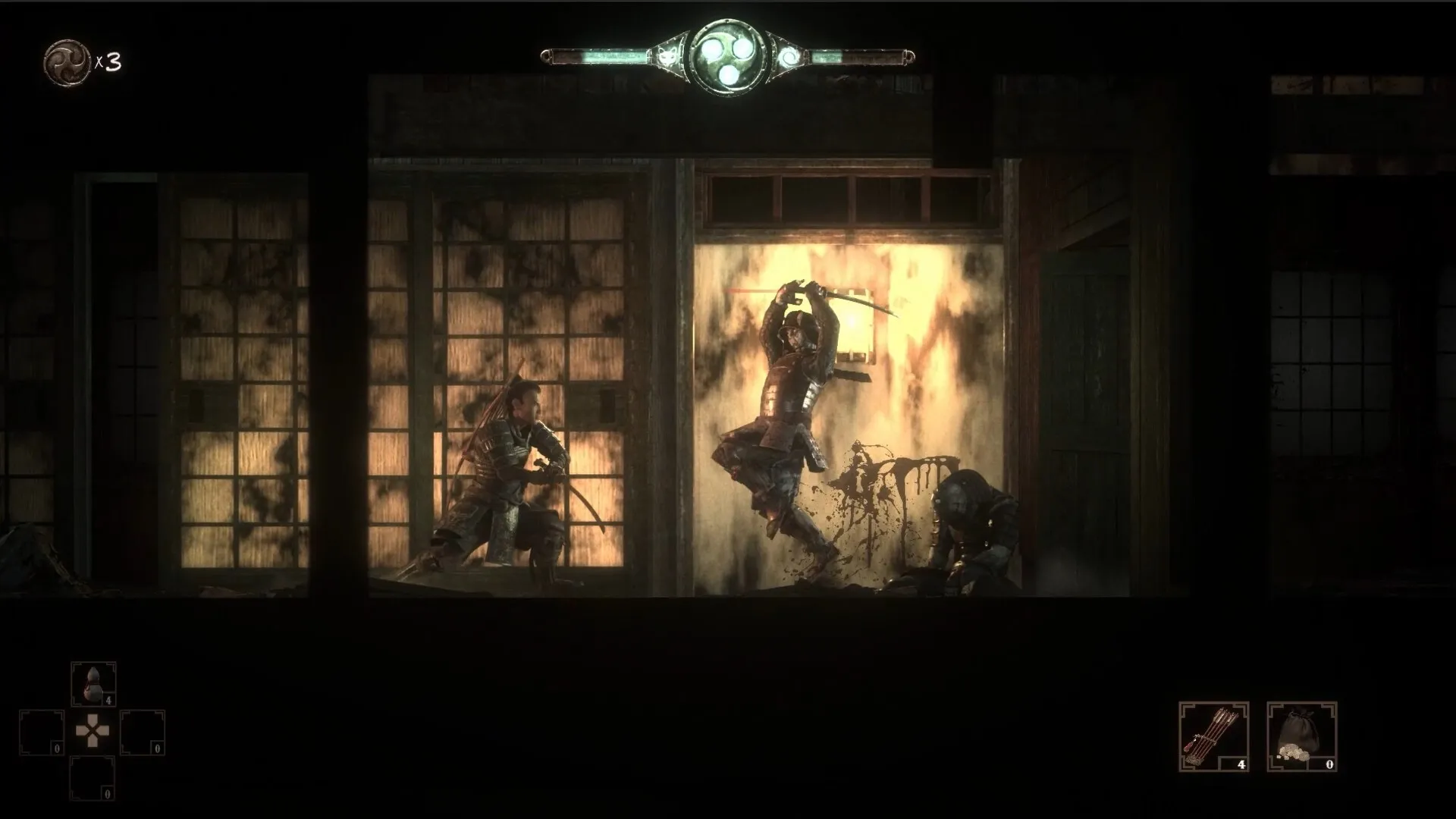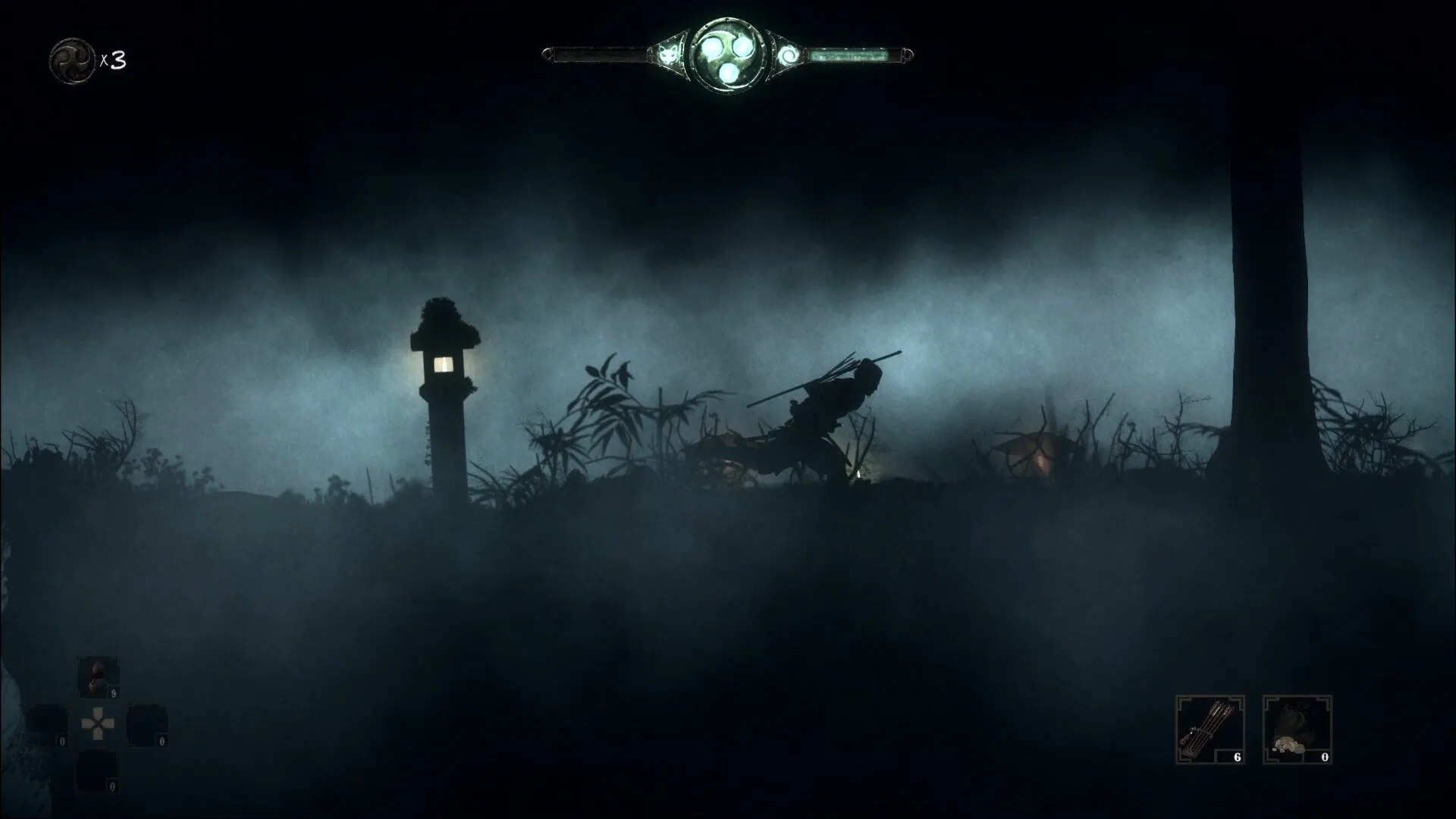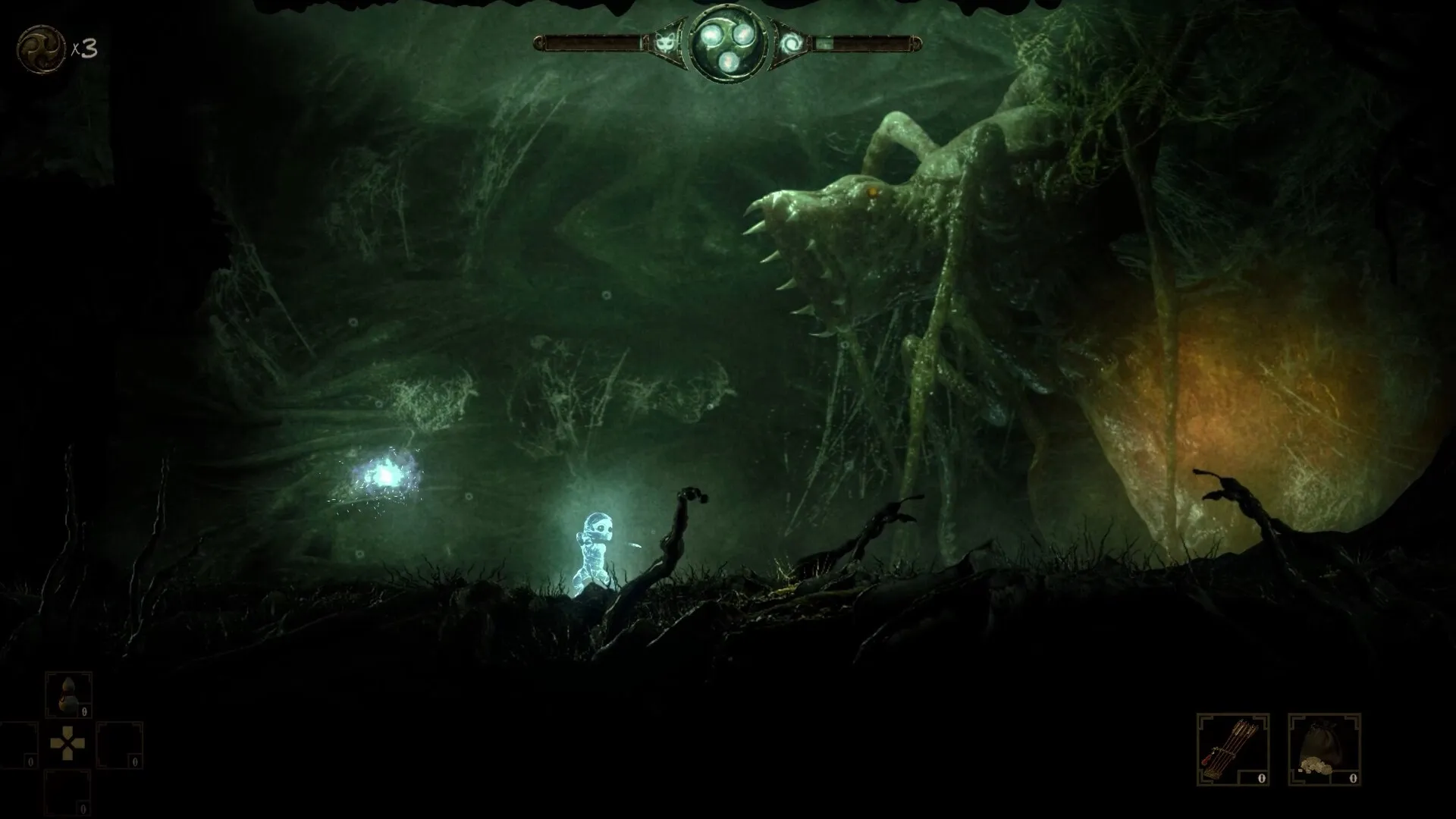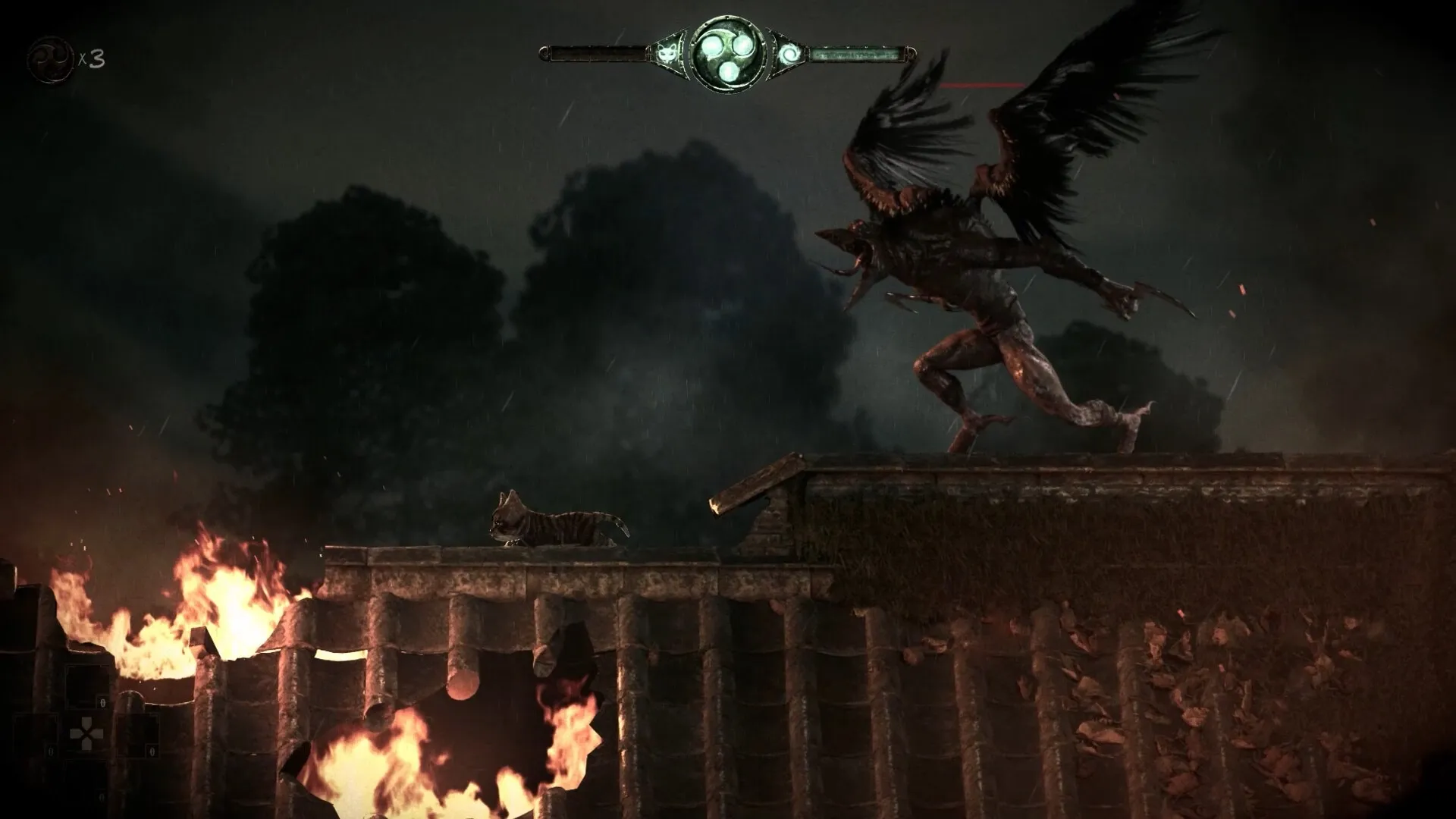In The Spirit of the Samurai, players take on the role of Takeshi, a samurai charged with protecting his village from a nefarious Oni. This richly imagined world steeped in Japanese mythology is a fusion of Souls-like combat and Metroidvania exploration that creates exciting tension, but it also begs the question of player agency.
Controls that don’t respond can diminish the sense of success when fighting, like in games like Dark Souls. Here, combat can lead to frustration, detracting from immersion, unlike Hollow Knight, where it feels fluid. Through an XP system, character development lets you change how they look, but choices often feel fixed, which makes it hard to get emotionally invested.
The thrill of discovery is undermined by the fact that exploration shows off beautifully designed environments where many hidden things are just upgrade materials. AI behavior can be inconsistent, leading to encounters that diminish the emotional stakes of the story. Despite its visually stunning presentation, the game’s mechanics and narrative integration could use more exploration of player choice and consequence.
A Hero’s Journey: Story and Characters in The Spirit of the Samurai
Takeshi is a brave samurai pulled into a fight against the Oni, a powerful demon threatening his village. This is the story that The Spirit of the Samurai is based on. Takeshi’s unwavering commitment to protecting those he loves enriches this narrative arc and establishes a timeless but emotionally powerful premise.
His loyal cat Chisai and the mysterious Kodama go with him on this journey. They not only add depth to the story but also show how important it is to be loyal and work as a team.
The relationship between Takeshi, Chisai, and Kodama shows the game’s main idea: that people can stay connected and friends even when things are very hard. However, integrating player choices with the narrative feels limited even though the premise is interesting.
The Spirit of the Samurai frequently leads players down a linear path, reducing the significance of their choices, in contrast to more complex RPGs where decisions affect character arcs and results. This may detract from the emotional interest that players may seek in a story-driven experience.
Cutscenes that tell the story and show beautifully animated scenes that use traditional Japanese art styles make the atmosphere better. Although the voice acting is good, there is a lack of Japanese dialogue, which would have increased cultural realism.
Although the thematic elements steeped in folklore and heroism are admirable, they frequently stay on the surface, missing the chance for a deeper exploration of the characters’ inner conflicts. This leaves players with a narrative that, while visually captivating, feels less impactful than it could be, ultimately reducing Takeshi’s journey’s total emotional resonance.
The Mechanics of Engagement: Analyzing Gameplay in The Spirit of the Samurai
The gameplay mechanics in The Spirit of the Samurai are meant to go hand in hand with the narrative, but the execution frequently leaves players wanting. Due to its focus on combos and stamina management, the combat system is meant to create a tactical experience similar to Dark Souls. Through a series of melee and magical attacks, players take charge of Takeshi.
Each action drains his stamina, which the player can see on the screen. This part of the approach rewards accuracy over button-mashing, which makes people more likely to participate carefully. The unresponsive controls, however, can obstruct this flow, leading to moments of frustration instead of pleasure. The AI is inconsistent, alternating between periods of challenge and moments lacking engagement, undermining the tension that should follow each encounter. Enemy variety, including samurai, yokai, and zombies, is present, but the AI frequently feels inconsistent.
The game is also built around exploration based on Metroidvanias and creates a world with many levels and hidden items. Beautiful landscapes that evoke a sense of wonder are featured in the level design; however, the promise of discovery can quickly become tedious. Many hidden items are just used to level up or complete quests, reducing the thrill of exploration to a mundane job.
Although visually appealing, the platforming components lack responsive mechanics, sometimes making movementt. Players might have trouble with jumps that aren’t shown on the screen or poorly marked paths, detracting from the realistic experience that the game aims to provide.
It’s not easy to handle side tasks and items. The lack of creativity in the game’s fetch quests and jobs can lead to player disengagement. Many side quests feel uninspired because they repeat goals over and over again without adding anything new to the narrative or improving the player experience.
Collecting items, including different resources for upgrades and money, can feel like work rather than a fun part of gameplay. The Spirit of the Samurai sometimes feels like it gives up depth for quantity, which differs from more polished independent games that reward exploration with important finds or character growth.
In the end, The Spirit of the Samurai’s exploration, combat, and item management mechanics have the potential to create an exciting experience, but their execution is frequently lacking. The interplay between mechanics and narrative could be improved to increase the emotional stakes and player engagement, creating a more cohesive and satisfying trip.
Aesthetic Harmony: Visuals and Audio in The Spirit of the Samurai
The Spirit of the Samurai draws players in with its stunning graphics, which are mostly made up of a unique stop-motion animation style. It is different from many other small games that use hand-drawn or pixel art styles because of this. Players are drawn into the world by the characters’ fluid motion and the world’s careful pacing, which evoke a sense of craftsmanship.
But this unique animation can feel slow at times, especially in fast-paced scenes where accuracy is very important. Even though stop-motion adds an artistic touch, it can sometimes compromise the fluidity expected in an action platformer, making some jumps and combat scenes less responsive than others.
Stop-motion animation has a unique look that is different from standard animation styles. It feels both old and new at the same time. It brings to mind the essence of great Japanese movies, which adds to the game’s connection to myths and folklore. Still, this one-of-a-kind style might seem odd to some players, especially when lightning-fast actions are needed. The result is a beautiful but sometimes difficult visual experience that requires patience and flexibility.
Along with the visuals, the sound design has been carefully thought out to add to the gaming atmosphere. The music combines traditional Japanese instruments with modern sounds, creating a world that feels both real and absorbing. The music has clear cultural influences, reflecting the ups and downs of Takeshi’s emotions on his trip. The lack of a Japanese voice-over is a missed chance to increase immersion. Still, the audio elements do a good job of raising the tension during encounters and providing a relaxing background during exploration.
The execution of The Spirit of the Samurai’s mechanics sometimes falls short of the artistic goal despite the game’s success in creating a visually and audibly captivating experience. The interplay of visuals and sound creates an evocative atmosphere, but sometimes, the frustration of these elements is undermined by gameplay frustrations, leaving players wanting a more cohesive experience.
Immersive Landscapes: Level Design and Atmosphere in The Spirit of the Samurai
A beautifully crafted world that serves as a canvas for its narrative and is full of environmental storytelling is presented in The Spirit of the Samurai. Each area is steeped in Japanese mythology and has beautiful woods, creepy shrines, and spooky landscapes that evoke a sense of wonder and dread.
When it comes to immersion, the choices made about how the game looks—from the fine details in the backgrounds to how the themes are carried through all levels—are huge. The visual design is beautiful, but it can sometimes get in the way of the gameplay, creating an experience where the beauty of the world can take your attention away from the mechanics at work.
The strong visual impact of this design encourages players to check out every corner. Still, the game’s pace isn’t always smooth. There are beautiful moments of exploration that frustrating platforming mechanics often break up. This can lead to a broken flow where players may feel forced to enjoy the scenery but are hampered by gameplay visuals, breaking the beautiful visuals’ initial immersion.
Technical issues make the experience even more difficult. Because of the small field of view, important parts and platforming tracks can get hidden, which makes navigation feel less natural. This can result in repeated deaths or pointless backtracking; both detract from the sense of discovery that a well-made Metroidvania should have.
Players must constantly choose between enjoying the art and participating in the game’s world mechanics because these technical issues often mar exploring the game’s world. The level design and atmosphere of the game ultimately create a beautiful background, but they also show the need for a more cohesive fusion of beautiful graphics and useful gameplay.
Navigating the Technical Terrain: Performance in The Spirit of the Samurai
Technical performance in The Spirit of the Samurai is important in determining the player experience, but it is marred by a number of issues that detract from the overall immersion. Frame rate stability changes a lot, especially when there are a lot of enemies on screen or when the combat is very intense.
These dips can stop the flow of gameplay, leading to moments where players feel more like spectators than active participants. Even though the game’s visual ambitions are admirable, the optimization isn’t quite up to par, which can annoy both new and experienced players.
These issues are made worse by control responsiveness. Input lag often gets in the way of the fluidity that is supposed to be there in combat, making precise moves feel slow. This lack of responsiveness can lead to frustrating deaths and a decreased sense of power over the game mechanics in a game that depends heavily on quick reflexes.
Additionally, players may experience noticeable bugs and glitches, ranging from small graphic issues to bigger problems that stop them from progressing in their quests. These technical issues can occasionally pull players out of the experience narrative, undermining the emotional stakes of Takeshi’s journey. The frequency and impact of these issues in The Spirit of the Samurai suggest a need for further development, ultimately impeding what could have been a more seamless and engaging adventure.
Reflections on The Spirit of the Samurai: Strengths and Challenges
The world in The Spirit of the Samurai is beautiful and full of interesting cultural details. The narrative is also very interesting. Its unique stop-motion animation style makes it stand out, creating an atmosphere that pulls players into Takeshi’s trip. However, the game suffers from serious performance issues, such as unstable frame rates and slow control response, which detract from the overall experience.
The lack of important player choices and consequences can make seasoned RPG fans feel let down, even though the combat system offers a promising blend of strategy and action. Although environmental storytelling is excellent, it frequently feels overshadowed by technological and pace problems.
The Spirit of the Samurai has much to offer players who want an interesting visual experience with some Japanese mythology. Those who want a polished gameplay experience with a deep narrative might want to go in with realistic expectations. This game has the potential to become a more cohesive and satisfying journey as the developers work to improve its mechanics.
The Review
The Spirit of the Samurai
A captivating narrative steeped in Japanese folklore, The Spirit of the Samurai captivates with its stunning visuals and rich cultural background. However, its potential is limited by performance issues, a lack of controls, and a lack of player choices. The game produces a beautiful atmosphere, but its technical flaws and inconsistent gameplay keep it from reaching its full potential. It has appeal for players who want an experience that is striking to look at, but players who want more depth and polish may find it wanting.
PROS
- Stunning stop-motion animation and visual design.
- Rich cultural and thematic elements rooted in Japanese folklore.
CONS
- Performance issues, including frame rate drops and control lag.
- Limited player choices and consequences that lack meaningful impact.
- Uneven pacing and frustrating platforming mechanics.





















































